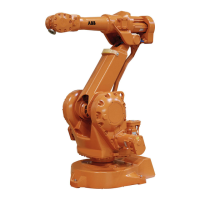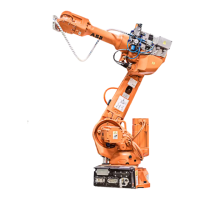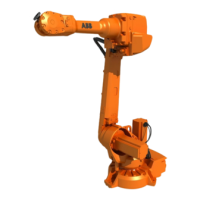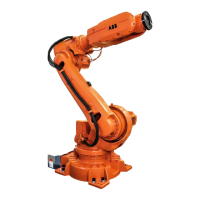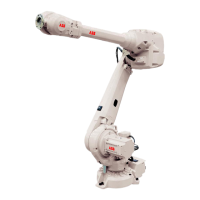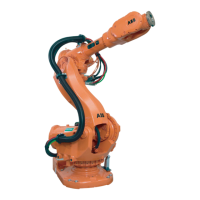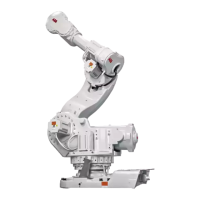• Never use solvents that are not approved by ABB to clean the robot.
• Do not spray from a distance closer than 0.4 m.
• Do not remove any covers or other protective devices before cleaning the
robot.
Cleaning methods
The following table defines what cleaning methods are allowed depending on the
protection type.
Cleaning methodProtection
type
High pressure water or
steam
Rinse with waterWipe with clothVacuum
cleaner
NoYes. It is highly re-
commended that
the water contains
a rust-prevention
solution and that
the manipulator is
dried afterwards.
Yes. With light
cleaning deter-
gent.
YesStandard
Yes
i
.Yes. It is highly re-
commended that
the water contains
a rust-prevention
solution.
Yes. With light
cleaning deter-
gent or spirit.
YesFoundry Plus
It is highly recommended
that the water and steam
contains rust preventive,
without cleaning deter-
gents.
Yes
ii
.Yes. It is highly re-
commended that
the water contains
a rust-prevention
solution.
Yes. With light
cleaning deter-
gent or spirit.
YesWash
It is highly recommended
that the water and steam
contains rust preventive,
without cleaning deter-
gents.
NoNoYes. With light
cleaning deter-
gent, spirit or
isopropyl alco-
hol.
YesClean room
i
Perform according to section Cleaning with water and steam on page 101.
ii
Perform according to section Cleaning with water and steam on page 101.
Cleaning with water and steam
Instructions for rinsing with water
ABB robots with protection types Standard, Foundry Plus, Wash, or Foundry Prime
can be cleaned by rinsing with water (water cleaner).
1
The following list defines the prerequisites:
• Maximum water pressure at the nozzle: 700 kN/m
2
(7 bar)
I
• Fan jet nozzle should be used, min. 45° spread
• Minimum distance from nozzle to encapsulation: 0.4 meters
• Maximum flow: 20 liters/min
I
I
Typical tap water pressure and flow
1
See Cleaning methods on page 101 for exceptions.
Continues on next page
Product manual - IRB 2400 101
3HAC022031-001 Revision: P
© Copyright 2004-2018 ABB. All rights reserved.
3 Maintenance
3.5.1 Cleaning the IRB 2400
Continued
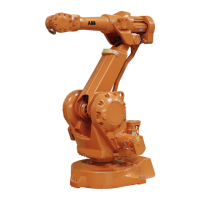
